The concept of luxury in the car evolves into everything that is automatic and electric, always with the user's well-being as a backdrop. This is evident in the new S-Class W223 . It's already available in Portugal, but we went to guide you, first hand, in Stuttgart, Germany.
As a segment where tradition still hangs, the biggest Mercedes-Benz has been able to maintain its position as the undisputed segment leader since the first generation was introduced in 1972 (under the name S-Class).
In the previous model (W222, which appeared in 2013 and 2017) around 80% of European customers bought an S-Class again, with this percentage of 70 points in the United States (a market that, together with China, helps to explain the because 9 out of 10 Class S are built with the Long body, with wheelbase 11 cm longer, two countries where “chauffeurs” are very common).
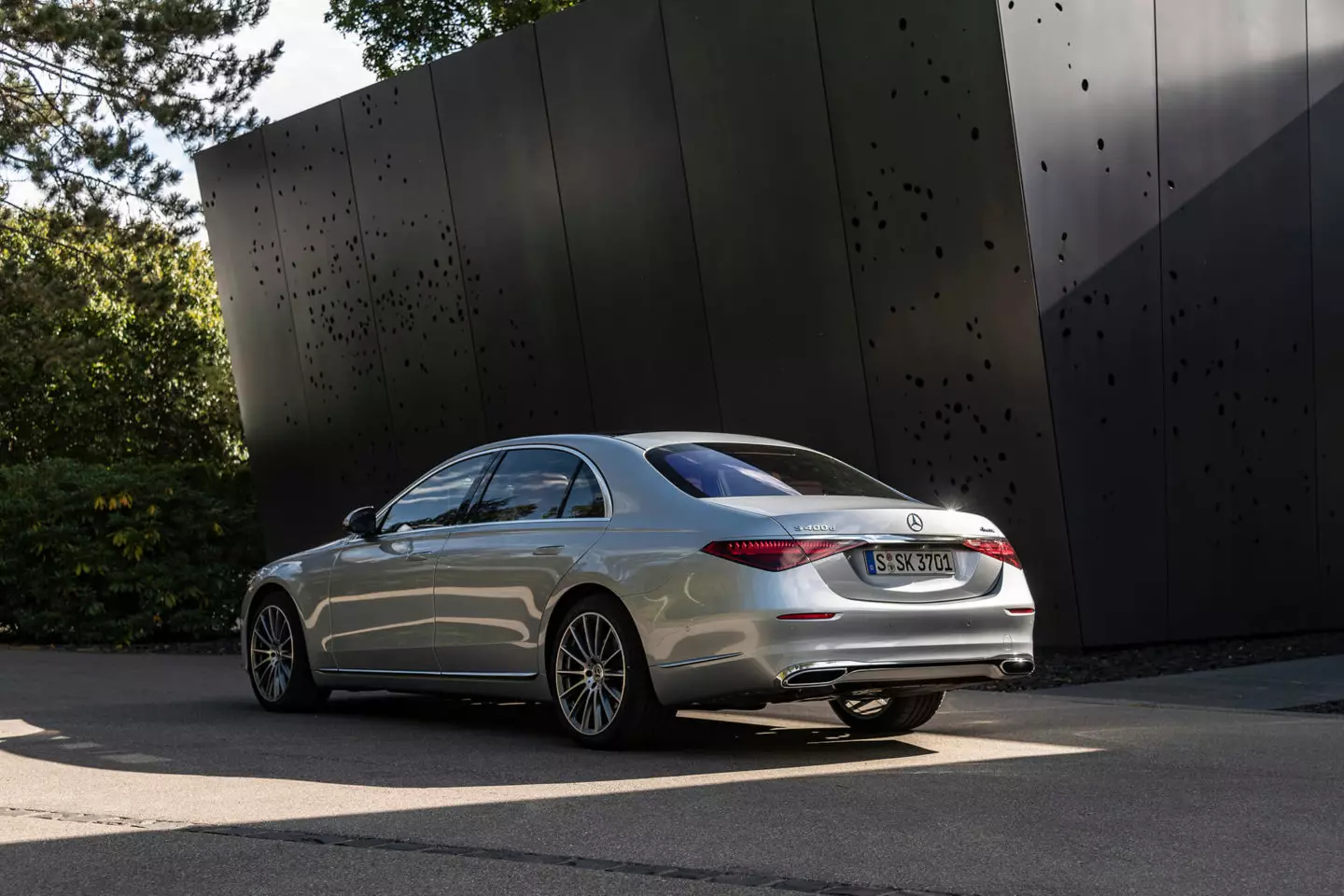
Despite the completely new design and platform, the proportions of the new generation (W223) have been maintained, with slight variations in dimensions. Referring to the “short” variant (which is not without some grace in a car over five meters long…), historically preferred in Europe, there is an additional 5.4 cm in length (5.18 m), more 5.5 cm in width (in the version with the new built-in door handles just an additional 2.2 cm), plus 1 cm in height and a further 7 cm between axles.
To learn more about the technical innovations in the sumptuous interior of the new W223 S-Class — and there are many —, in addition to the main innovations in the chassis and safety equipment, follow the link below:
The new S-Class “shrinks”…
… is the first impression on board, already underway, maneuvering in the narrow parking lot at Stuttgart airport. Jürgen Weissinger (car development manager) sees my face in surprise and smiles when he explains: “It's the merit of the new directional rear axle that turns the rear wheels between 5th and 10th, which makes the car more stable at speeds of cruise and becomes much more maneuverable in the city”.
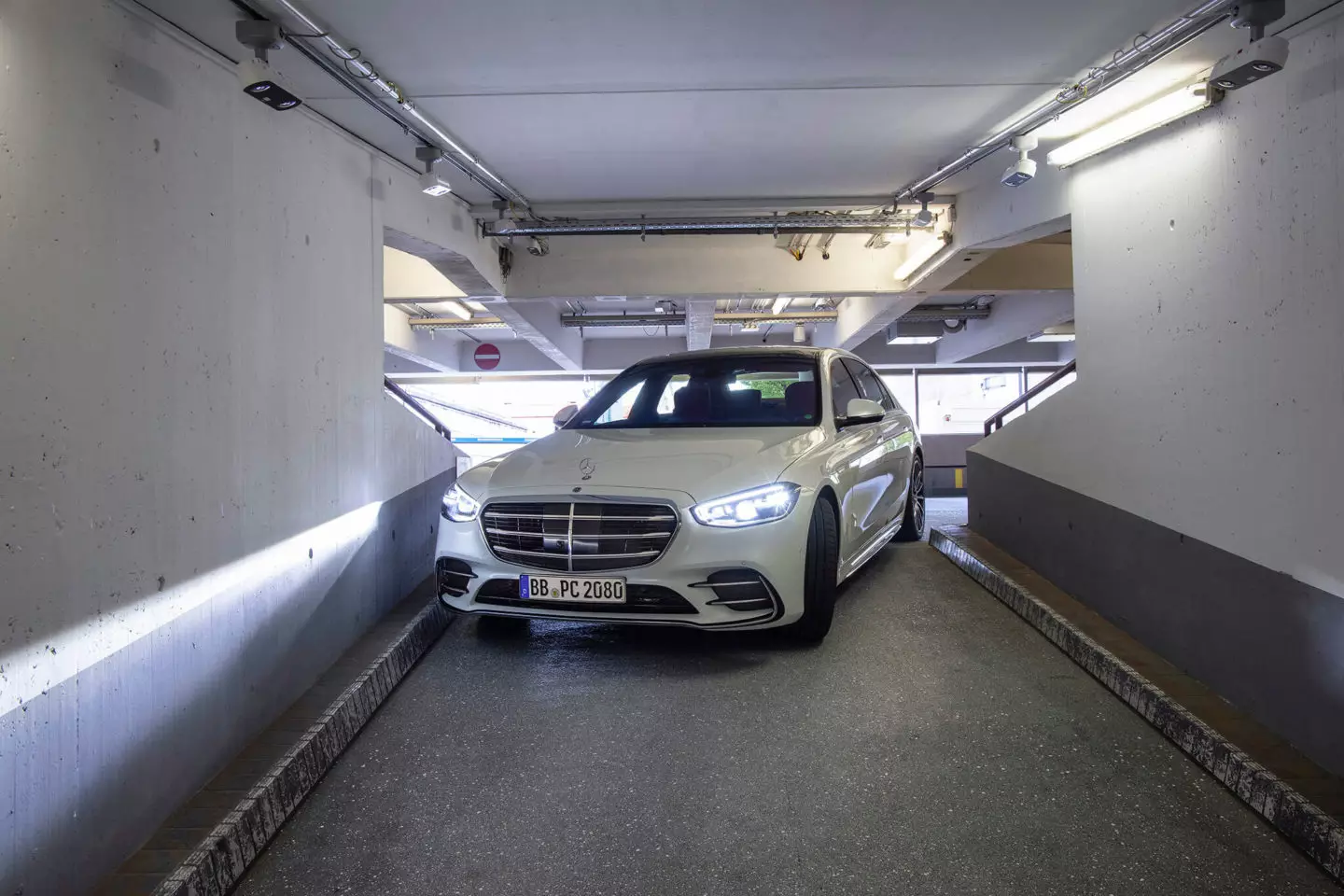
And really, shortening a complete turn on the axis by more than 1.5 m (or 1.9 m in the case of this S-Class XL I have in my hands) is something important (the turning diameter of 10.9 m is similar to that of a Renault Mégane, for example).
Subscribe to our newsletter
The second favorable impression is not, unlike the first, unexpected. It has to do with the low noise level aboard the new S-Class (even if it's a Diesel, the S 400 d) that even at high cruising speeds (only legal on German highways) allows you to almost whisper and the companions travelers hear everything clearly, even if they are the ones seated in the second row of aristocratic benches.
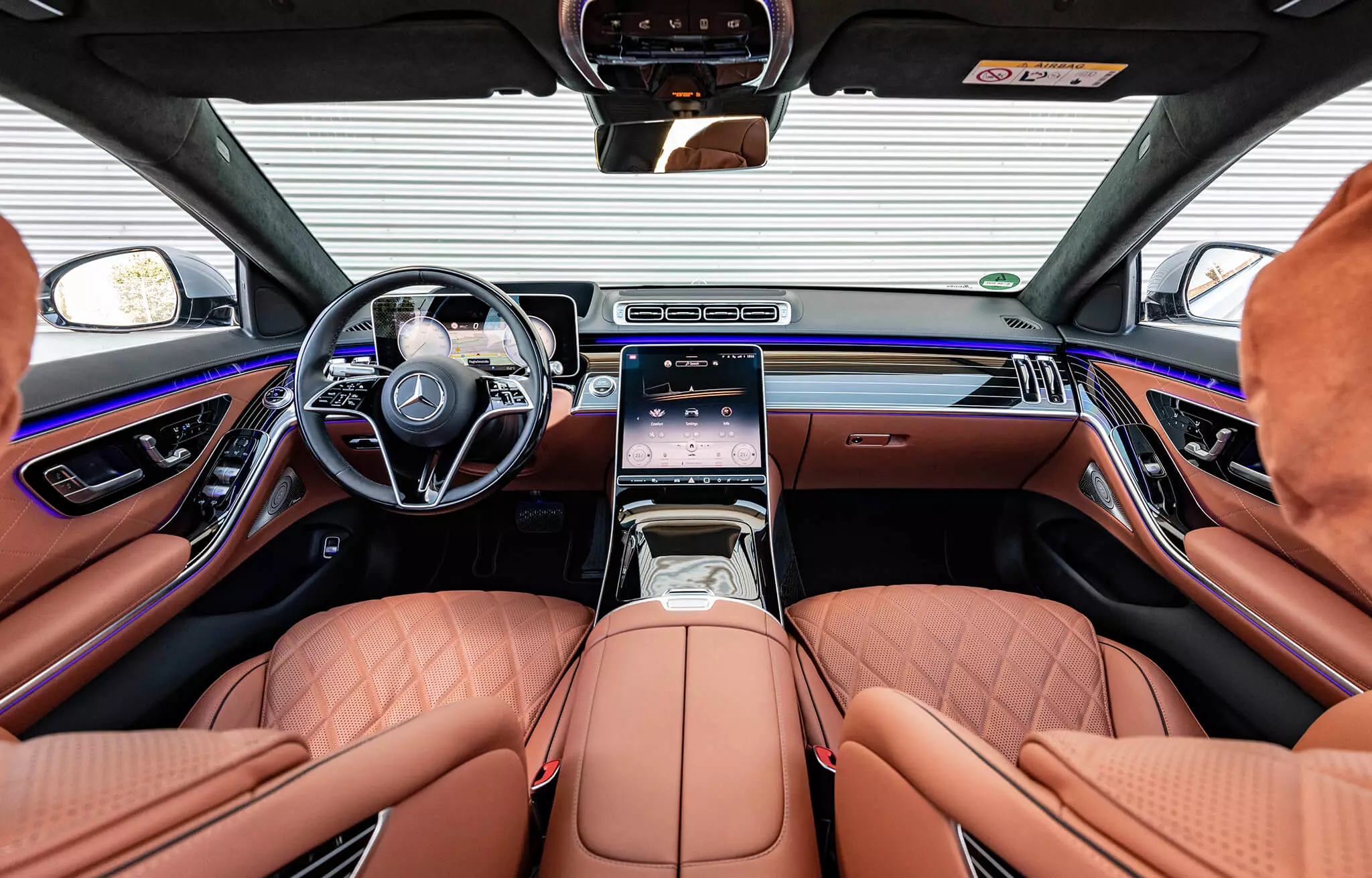
As for the all-new seats, I can confirm that they deliver on the promise of being a little firmer, but they provide a complete balance between immediate comfort (common on softer seats) and long-term comfort (typical of harder ones), while being well contoured , but without limiting the movements.
The feeling of not wanting to get out of the car after getting in is reinforced by the incredibly soft headrests (which have new cushions that look like they're made of cotton candy clouds), but also by the air suspension action, which gives the crisp impression of being able to smooth the tar even on the highest bumps.
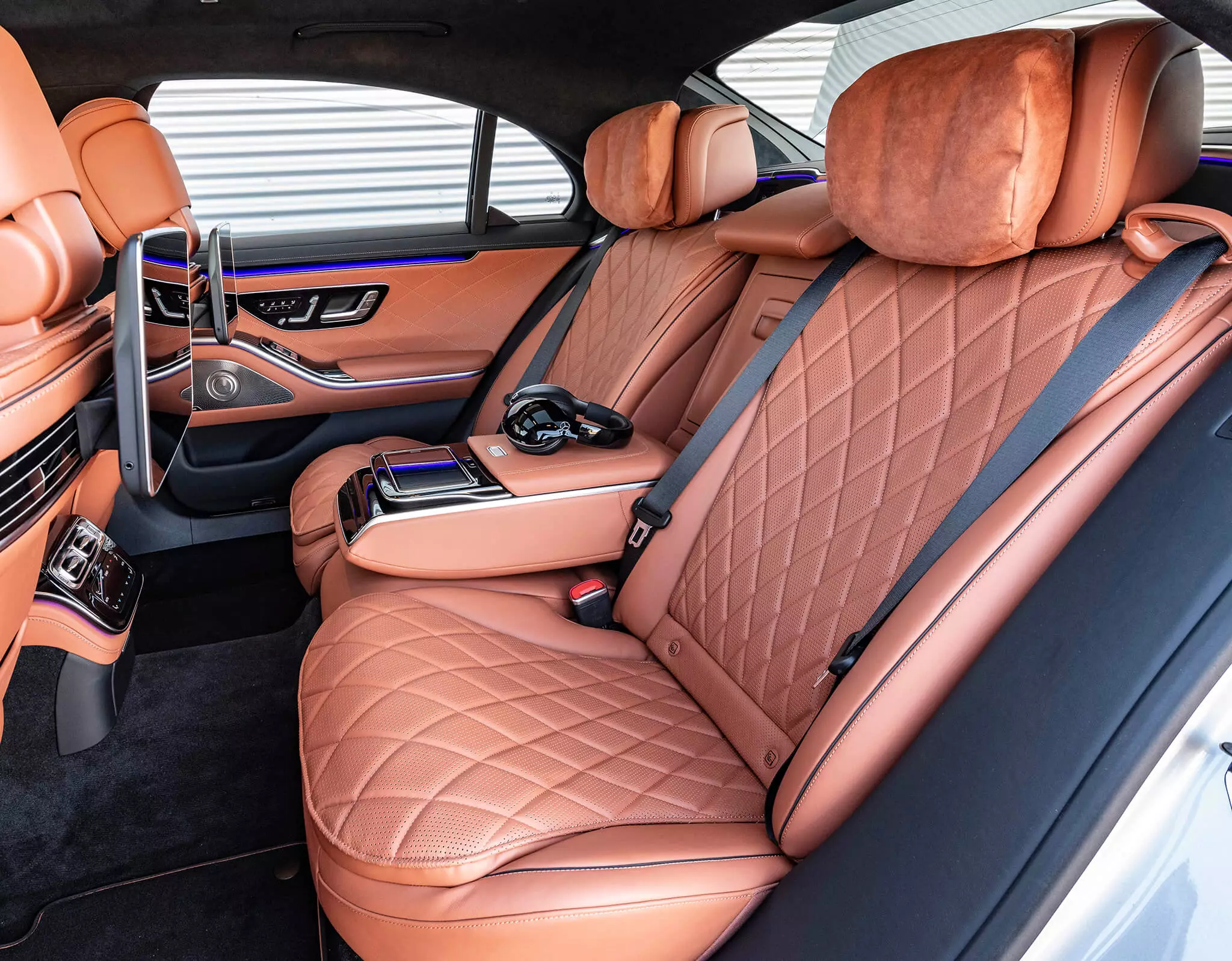
Flying carpet
Any touch of the accelerator results in a heady engine response, even without exhausting the right pedal stroke (ie without activating the kickdown function). The merit is the delivery of 700 Nm of total torque at an early start (1200 rpm), with the due contribution of the 330 hp of maximum power. This also includes acceleration in just 6.7s from 0 to 100 km/h, even if its total weight is slightly more than two tonnes.
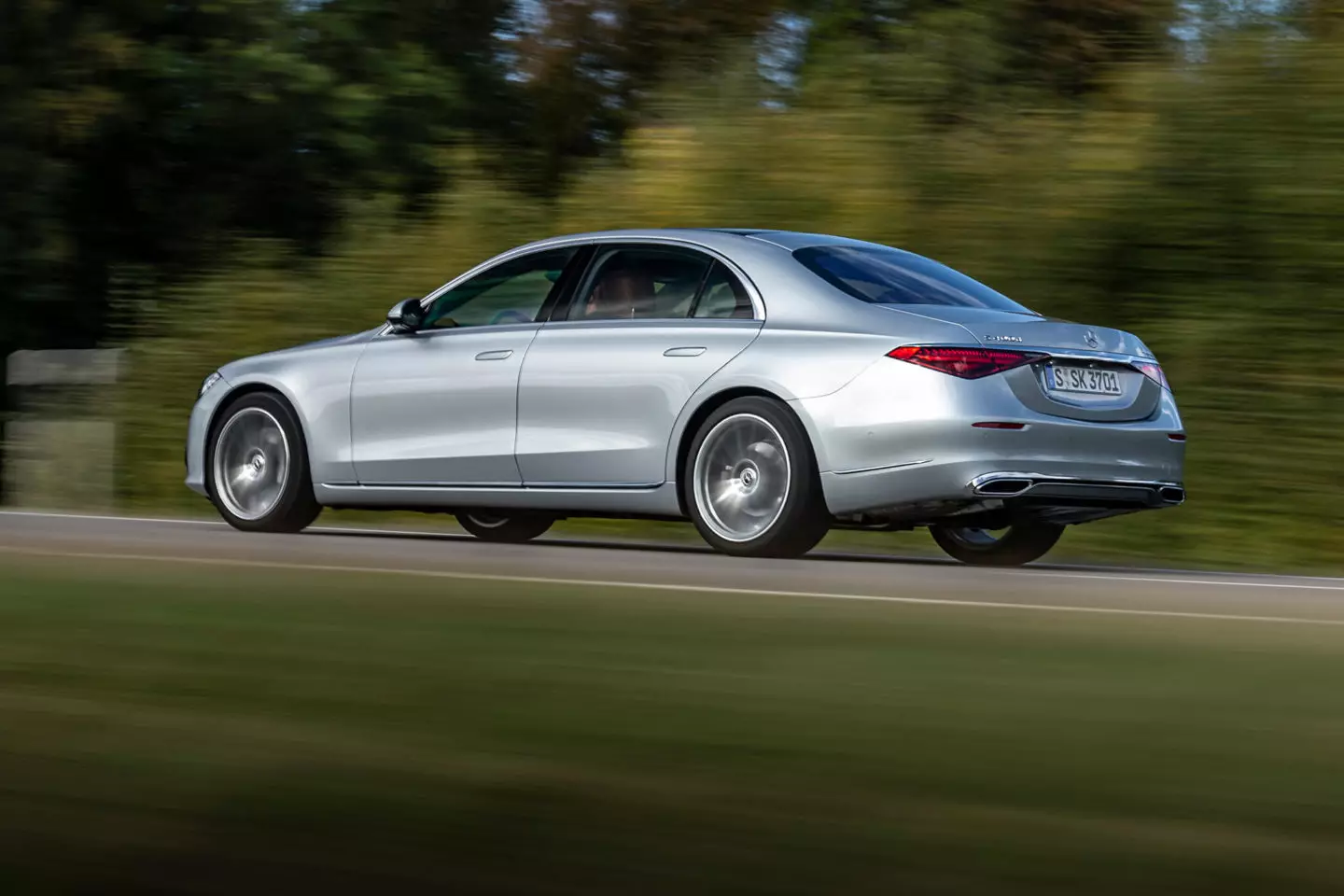
All the maneuverability I praised before does not mean that the car is agile in curves, because neither the weight nor the proportions allow it, but that is not its vocation either (there is a natural tendency to widen trajectories when we exaggerate, despite the help. electronics and four-wheel drive).
It's not worth looking for a Sport mode in driving programs because it doesn't exist, but that would be like asking Prince Charles to participate in a 400 m hurdle race… but even if the heir to the British crown doesn't sit in the seat that is predestined for him. (right rear, where the back adjustment can vary from 37º to 43º or it is possible to receive a massage with a hot stone effect), behind the wheel, the preference will always be for softer rhythms, where the new S-Class raises the bar again which is offered on board a car, by providing pharaonic comfort levels.
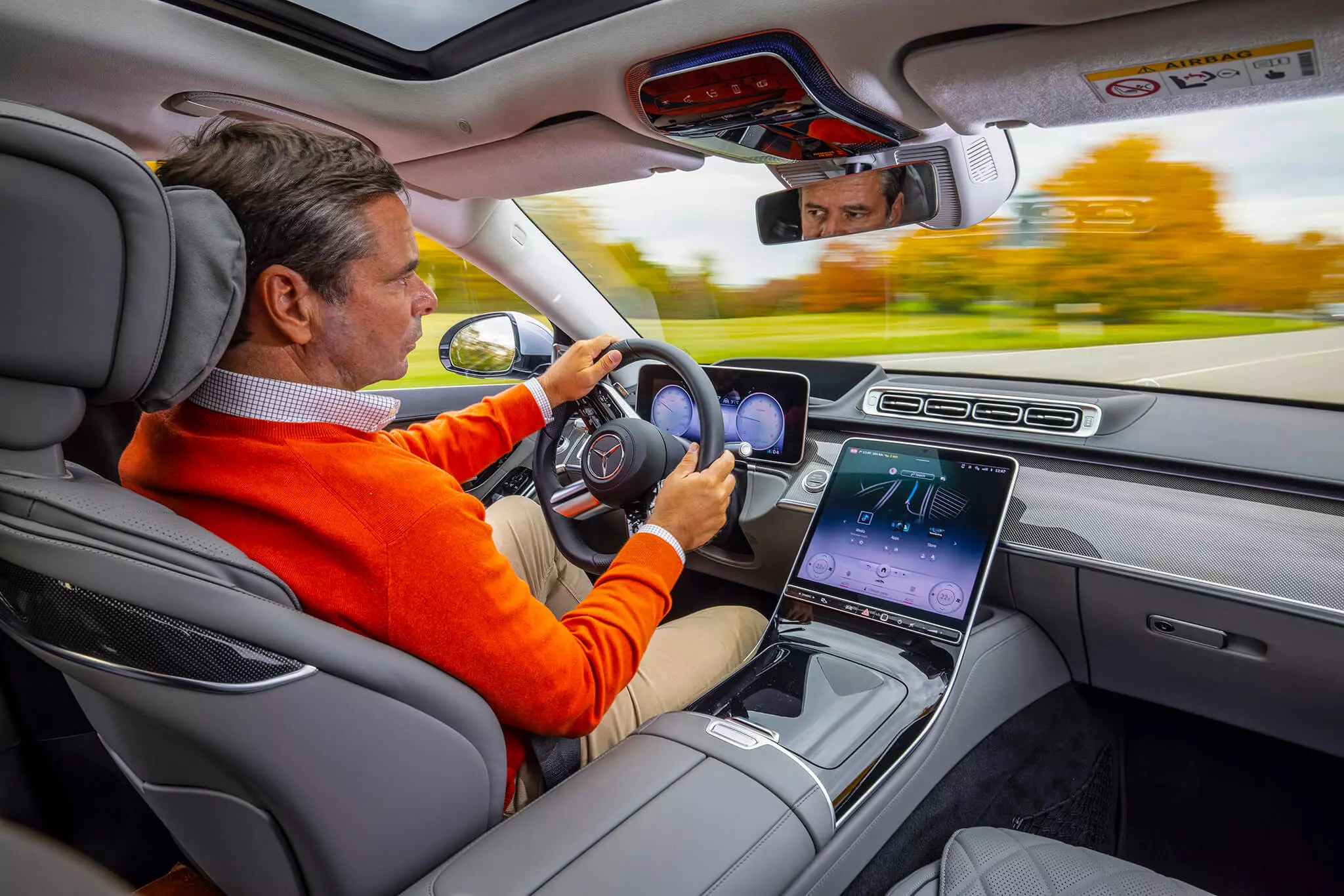
The nine-speed automatic transmission is fast and smooth enough, conspiring with the in-line six-cylinder block to guarantee a very moderate average consumption considering the levels of power, performance and weight. After traveling more than 100 km (a mixture of highway and some national roads), we ended up with a record of 7.3 l/100 km in the digital instrumentation (that is, about half a liter above the homologated average).
The most advanced HUD in the world
German engineers drew attention to the advantage of the information projection system on the windshield (on a surface equivalent to a 77” screen), which, in addition to having interactive augmented reality functions, “is projected” onto the road much more farther than before, allowing the driver's field of vision to be widened and thus increased safety.
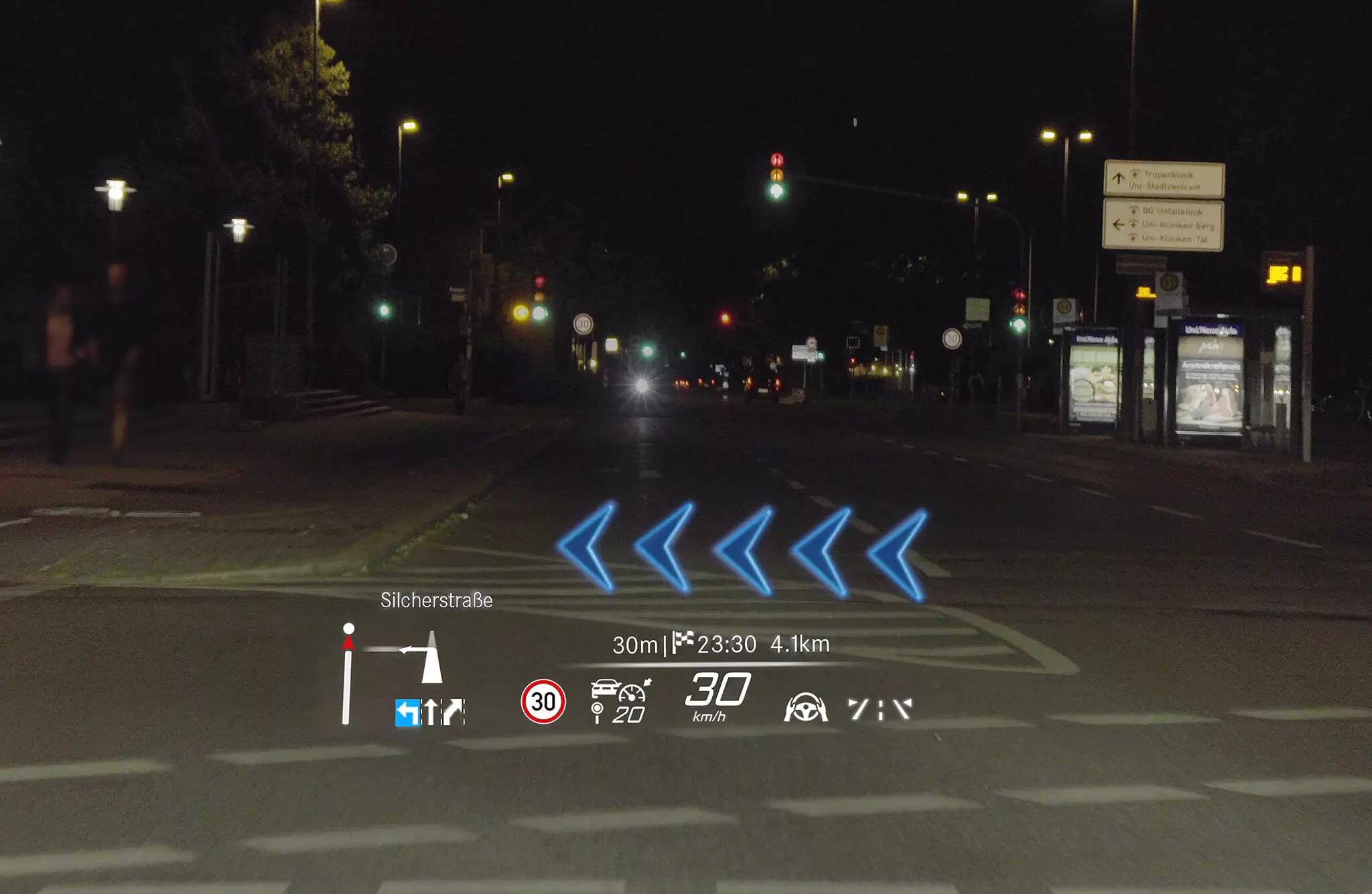
It is true that this concept of a dashboard full of screens and projections will force future drivers to take some time to adapt and customize, such as the amount of information in the three displays (instrumentation, the vertical center and the screen projected on the windshield or HUD), but in the end, the driver will get used to it because he will be using it constantly for a long time and not just two hours like this journalist during the dynamic test.
It works very well and is one of those solutions that, when they appear, lead us to question why it wasn't always done like this… it is expected that in the short term it will also start to exist in other Mercedes models, but also in those of the competition.
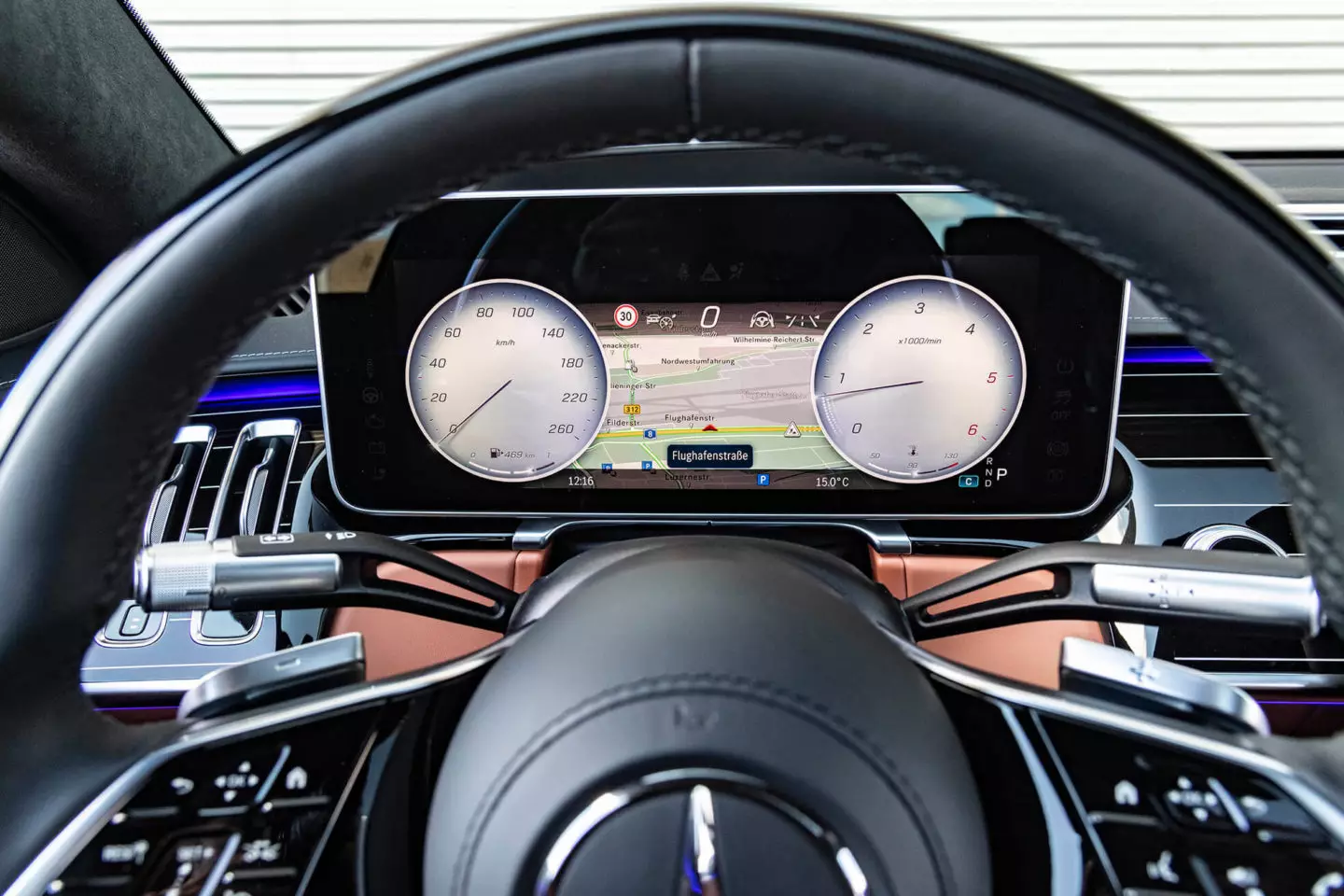
Details that deserve to be corrected in the new S-Class: the sound and touch of the indicator selector and the sound of closing the boot lid which, in both cases, sound like they were from a very classy car (very ) bottom.
100 km electric range for plug-in hybrid
I was also able to guide the plug-in hybrid version of the new S-Class over a route of about 50 km, to get the first impressions of a car that promises to change the concept we have of this type of propulsion system: this is because having 100 km of electricity at the beginning of any trip allows you to face each day, almost always, with the certainty of being able to do it completely in zero emissions mode. You can then rely on the petrol engine and the large tank (67 l, which is 21 l more than its rival par excellence, the BMW 745e) for a total range of around 800 km, especially useful for longer trips.
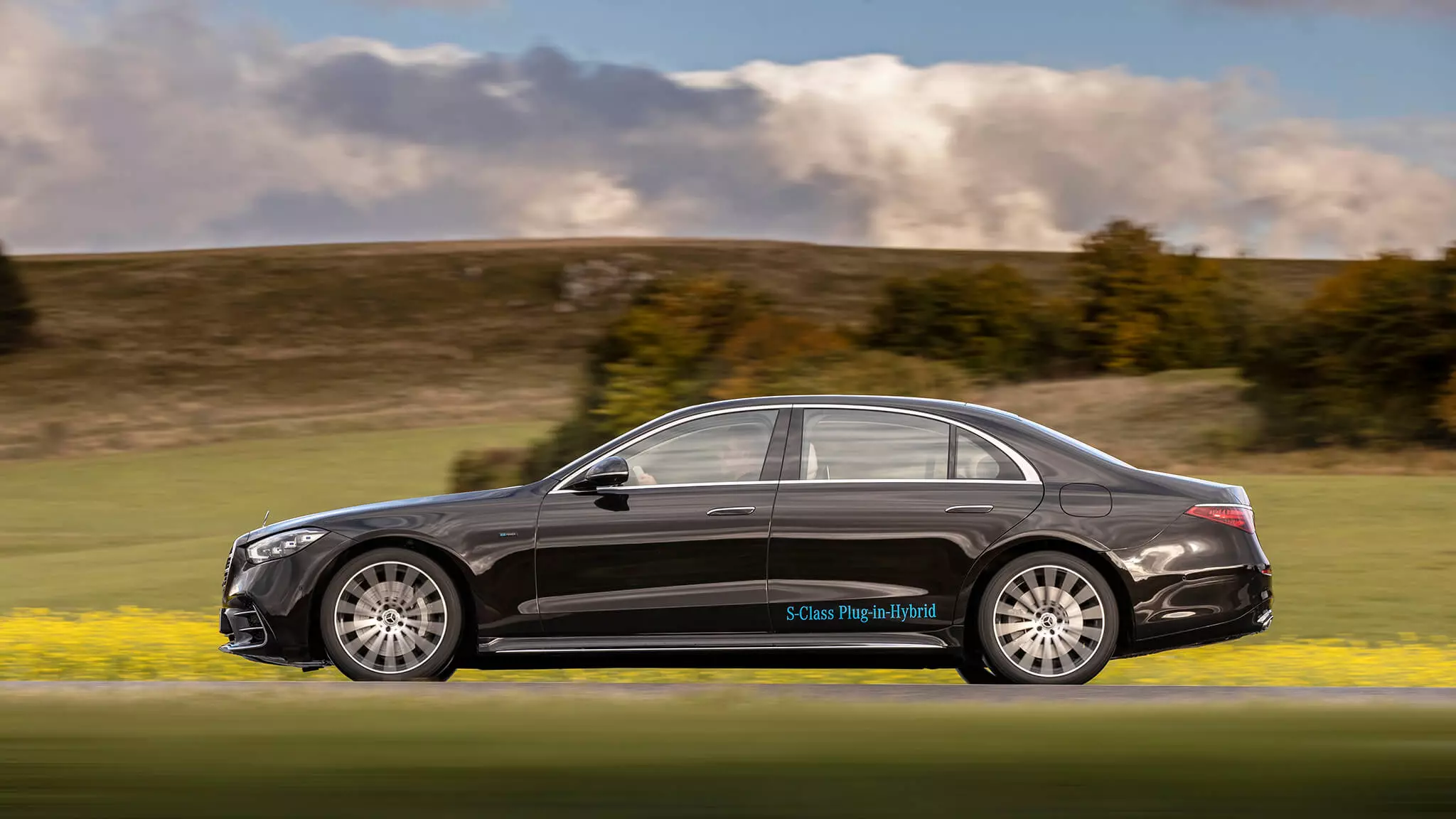
It combines the 3.0l and six-cylinder in-line 367hp 500Nm gasoline engine with a 150hp and 440Nm electric motor for a total system output of 510hp and 750nm. Numbers that allow for the new S-Class sporty accelerations (about 4.9s at 0-100 km/h, not yet homologated), top speed of 250 km/h and an electric top speed of 140 km/h (so you can drive on fast roads without the your driver will feel any kind of embarrassment) and even a little more (up to 160 km/h), but with a part of the electric power already reduced, so as not to subtract too much energy from the battery.
The great advance of the hybrid system is also due to the increase in battery capacity, which tripled to 28.6 kWh (21.5 kWh net), managing to increase its energy density and be more compact, which allowed a better use of space of the suitcase (unlike what happens in the plug-in hybrid version of the E-Class and the previous S-Class).
It's true that it offers 180 liters less than in the non-plug-in versions, but now the space is much more usable, without the step on the trunk floor that acted as an obstacle when loading the car. The rear axle was mounted 27mm lower than on other S versions and the chassis was originally developed with the plug-in hybrid version in mind, which allowed the load plane to be uniform, albeit a little higher.
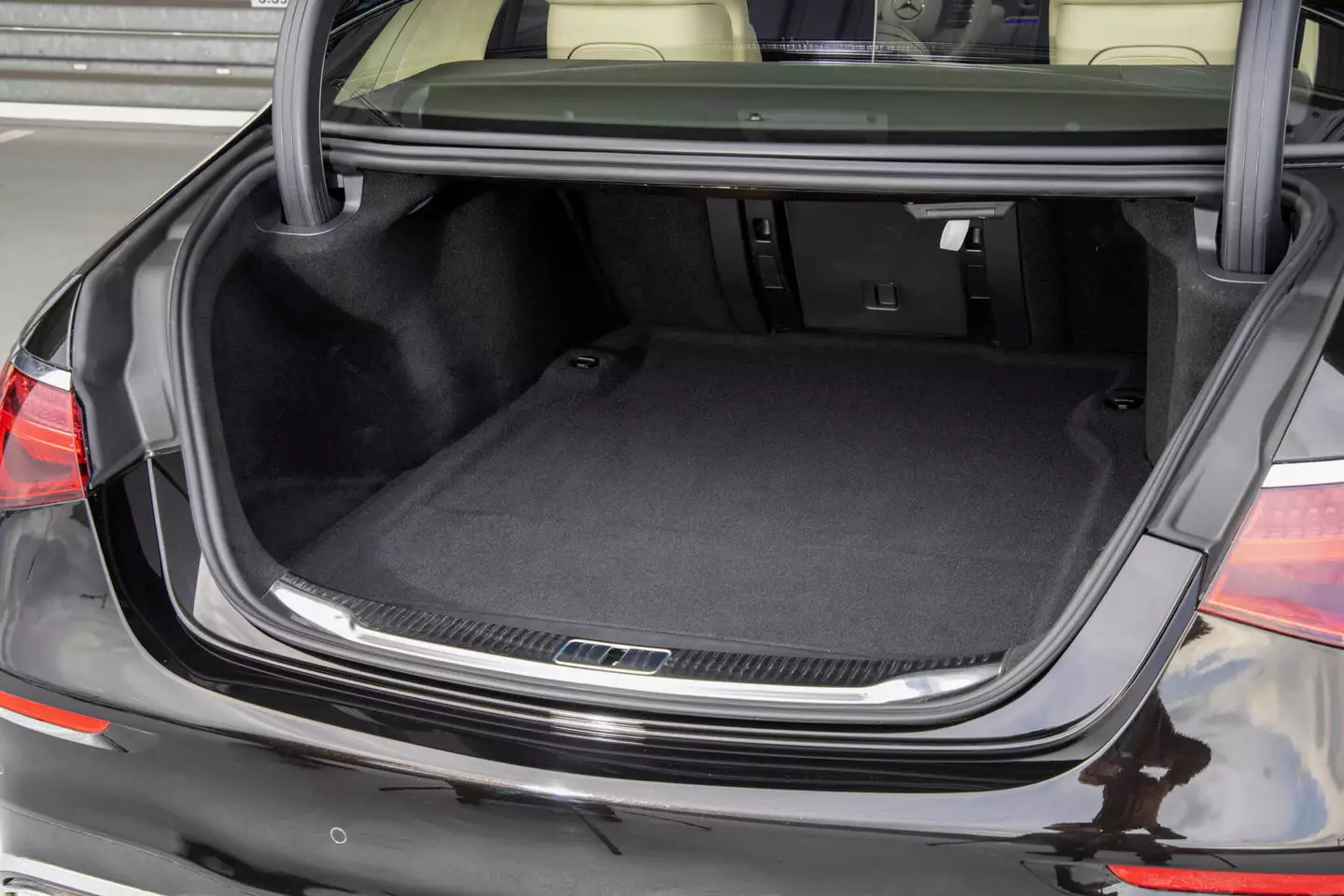
Another positive evolution was registered in charging: 3.7 kW single-phase in a domestic socket, 11 kW three-phase (alternating current, AC) in a wall box and (optional) with a 60 kW charger in direct current (DC), which means it's the most powerful charging plug-in hybrid on the market.
In the test, it was possible to see the enormous smoothness in the alternation and power flows of the two engines, the very well-adapted nine-speed automatic gearbox (whose smoothness is only benefited by the ISG electric motor-generator) and also the convincing performances, as well as a really low gasoline consumption of fuel, mainly on the urban circuit, but also on the road.
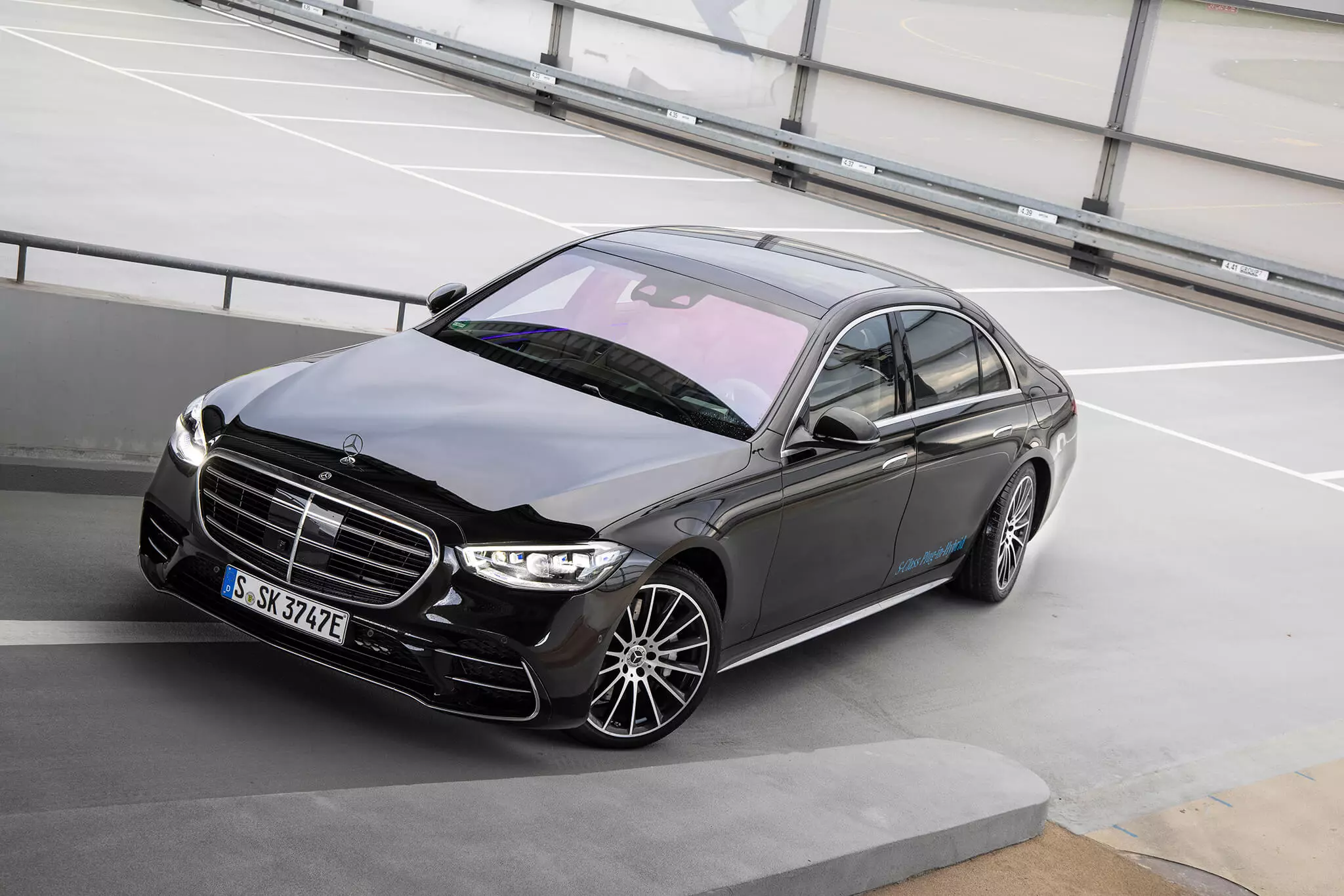
What German engineers will have to improve is the tuning of the braking system. When we step on the left pedal, we feel that until the middle of the course, little or nothing happens in terms of speed reduction (in one of the infotainment menus you can even see that at this intermediate point it does not go beyond 11% of the power of braking). But, from there, the braking force becomes more noticeable, but there is always a feeling of little safety, the touch of a spongy pedal and a very uneven operation between hydraulic and regenerative braking.
The “father” of the new S-Class, my traveling companion, admits that this calibration will have to be improved, although he explains that it is a delicate balance: “If the braking is strong from the first moments when we start stepping on the accelerator, the recoverability is almost nil. And that will happen at least until the two systems – hydraulic and regenerative – are integrated in the same box, something we are working on for the medium-term future.”

Level 3 of autonomous driving
Another clear progress of the new S-Class is that which has to do with autonomous driving technology, capable of reaching level 3, as I witnessed in a laboratory robot car moving through a handful of other Mercedes, which Challenges were being presented to him. Drive Pilot, as it is called, is operated by means of two buttons on the steering wheel rim, which make the car fully assume the driving functions.
The forecast is that the system will start to be produced in series in the second half of 2021, mainly because there is still no legislation that allows its use.
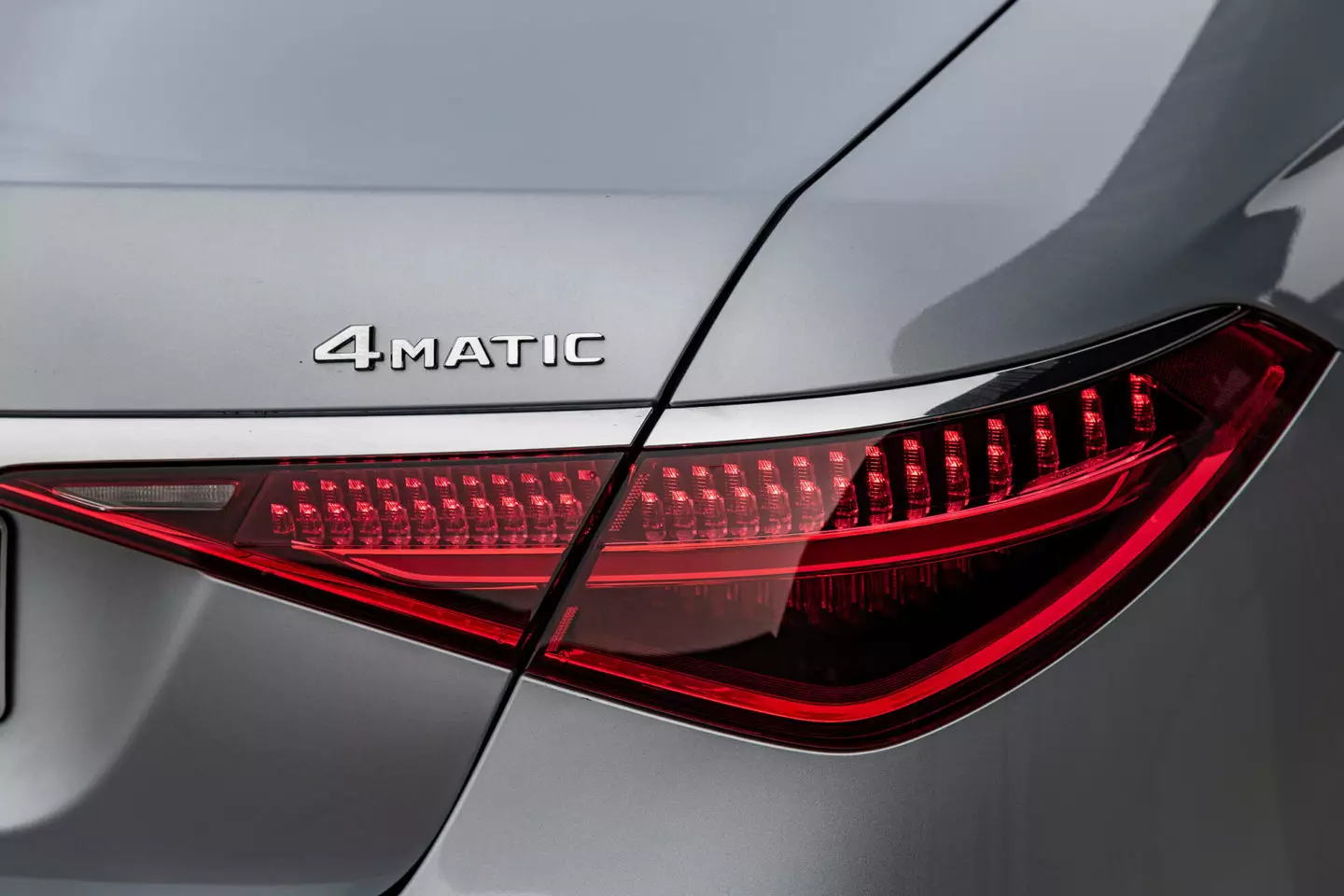
Level 3. When?
Germany will be the first country to authorize it, which means that the responsibility for what happens during autonomous driving lies with the car manufacturer and not the driver. Even so, with more limitations than expected: speed will be limited to 60 km/h and it will be necessary to have a car in front to serve as a reference, it can be said that this is a sophisticated traffic assistant and not a fully autonomous car.
Also with regard to autonomous functions, the new S-Class is once again ahead of the competition in parking maneuvers: your driver can leave you in a starting area (in parking lots prepared with sensors and cameras like the one in which the function was demonstrated to me) and then activate the application on the smartphone so that your S-Class looks for a free place, there you can go and park by yourself. And the same is true on the way back, the driver simply chooses the pick-up function and a few moments later the car will be in front of him. A bit like in the comic book when Lucky Luke whistled to call Jolly Jumper, his faithful equine partner.
Launch
At the commercial launch of the new S-Class, which has already taken place (with the first deliveries reaching customers in December-January), the S 450 and S 500 gasoline versions (3.0 l, six-cylinder in-line, with 367) became available. and 435 hp, respectively) and the S 350 Diesel engines of S 400 d (2.9 l, six in-line), with 286 hp and the aforementioned 360 hp.
The arrival of the plug-in hybrid (510 hp) is expected in the spring of 2021, so it is acceptable that the tuning of the braking system will be improved until then, as in the other S-Class with ISG (mild-hybrid 48 V), who suffer from the same problem.
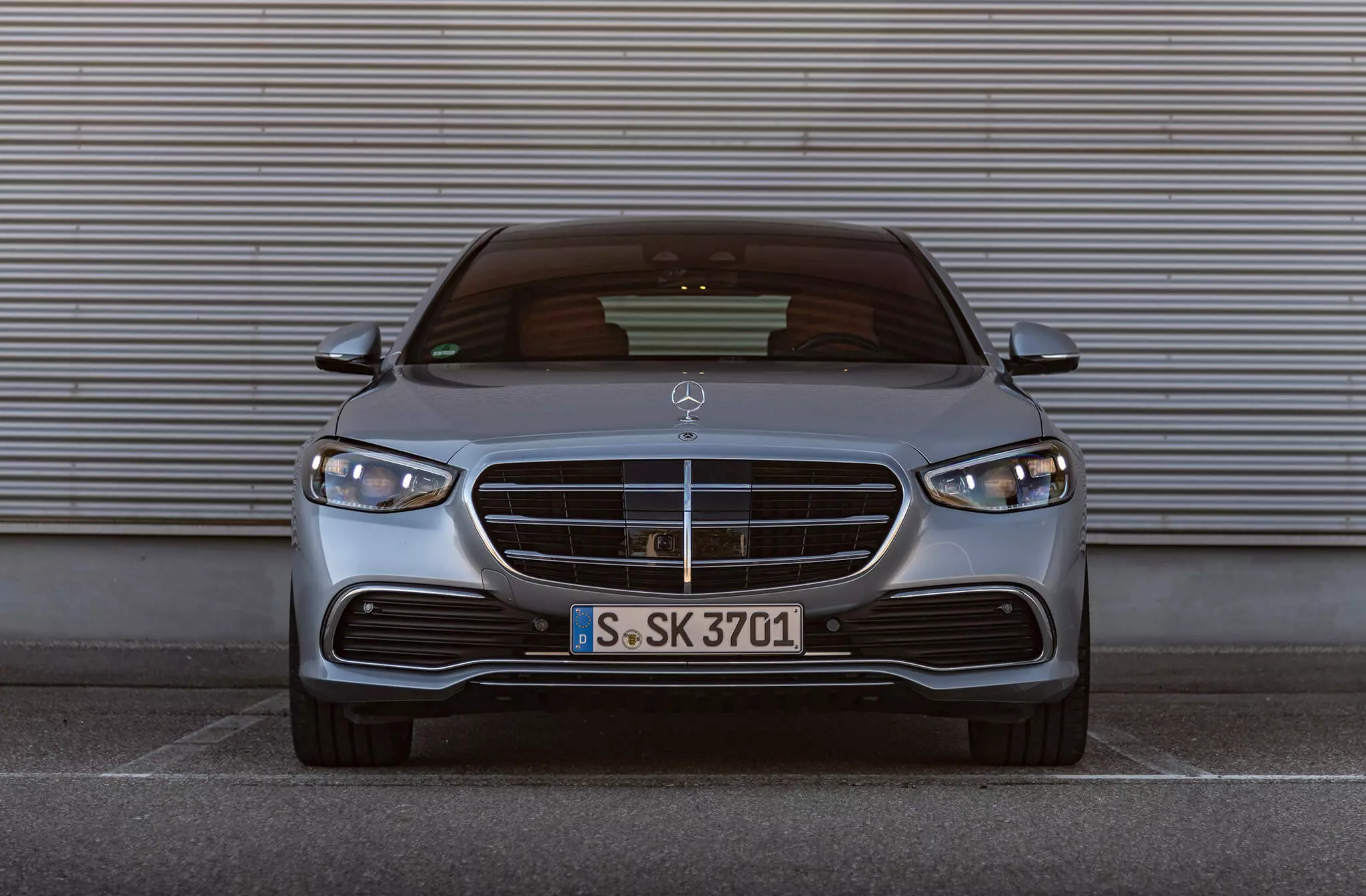
Technical specifications
| Mercedes-Benz S 400 d (W223) | |
|---|---|
| MOTOR | |
| Architecture | 6 cylinders in line |
| Positioning | Longitudinal Front |
| Capacity | 2925 cm3 |
| Distribution | 2xDOHC, 4 valves/cylinder, 24 valves |
| Food | Injury direct, variable geometry turbo, turbo |
| power | 330 hp between 3600-4200 rpm |
| Binary | 700 Nm between 1200-3200 rpm |
| STREAMING | |
| Traction | Four wheels |
| Gear box | 9 speed automatic, torque converter |
| CHASSIS | |
| Suspension | Pneumatics; FR: Overlapping triangles; TR: Overlapping triangles; |
| brakes | FR: Ventilated discs; TR: Ventilated Discs |
| Direction/Diameter Turning | Electrical assistance; 12.5 m |
| DIMENSIONS AND CAPACITIES | |
| Comp. x Width x Alt. | 5.179 m x 1.921 m x 1.503 m |
| Between axles | 3.106 m |
| trunk | 550 l |
| Deposit | 76 l |
| Weight | 2070 kg |
| Wheels | FR: 255/45 R19; TR: 285/40 R19 |
| BENEFITS, CONSUMPTION, EMISSIONS | |
| Maximum speed | 250 km/h |
| 0-100 km/h | 5.4s |
| Combined consumption | 6.7 l/100 km |
| Combined CO2 emissions | 177 g/km |
